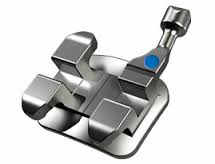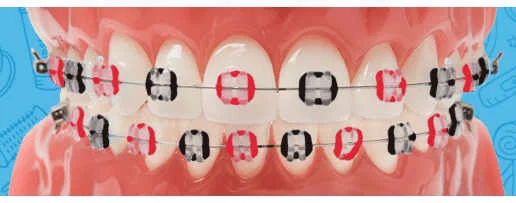
Orthodontic Braces
Solutions for Children, Teens and Adults
Why Get Braces?
Making the decision to begin orthodontic treatment with braces is an excellent investment for overall dental, social and psychological well-being for you or your child. Aside from the fact that straight teeth are often-times easier to clean than crowded teeth, giving yourself or your child the ability to smile confidently at the world is a gift that keeps giving.
Aside from all that, smiling is good for your health! Studies show that smiling (even fake smiling) can improve your mood, reduce stress, make you more approachable, increase creativity, and even lower blood pressure. (See references below)

What are Orthodontic Braces?
Whether they are clear braces, invisible braces, ceramic braces, or traditional metal braces, the term “braces” refers to an orthodontic appliance commonly used to straighten teeth and align bites. While the technology of braces has evolved over the years, the primary components have stayed remarkably the same for nearly 100 years, standing the test of time as the gold standard to move teeth and make beautiful smiles.


Bracket: the bracket is the part of the braces that is actually attached to your tooth. It can be made of metal such as stainless steel or a ceramic material that blends in with your tooth color. A bracket includes a “slot” which holds the “arch wire” and four “tie hooks” which are used to hold the wire in place. (photos above courtesy of Opal Orthodontics and 3M Unitek Orthodontics)

Arch Wire: an orthodontic “arch wire” is the part of the braces which goes through the bracket slot and provides much of the gentle forces used to move teeth. We typically will go through 3-5 sets of arch wires during orthodontic treatment beginning with the most gentle flexible wires first to provide the softest, gentlest, and most comfortable patient experience possible.

Ties: orthodontic ties are small rubbery bands used to hold the arch wire securely in the slot of the bracket. These ties come in 25 different colors and are changed at each visit, allowing each patient to customize their braces to match their personality, sport school colors, or celebrate holidays! Or they can be silver to blend in with metal braces or clear to blend in with tooth-colored braces. (Read our blog post about customizing your braces colors.)
When Is the Best Time for Braces?
Although braces are commonly done in young kids and adults, the ideal time to start orthodontic treatment in many children is when all the adult teeth are in, or nearly in, the mouth. This typically occurs around 11-13 years of age, however there is a lot of variation to the timing of tooth eruption and this may occur earlier or later in some kids.
This is a good time for treatment for a variety of reasons. Bone in the jaws and around the teeth may be less rigid and teeth may move more quickly in younger people than in adults. In addition, certain bite problems may benefit from treatment while the patient is still growing during adolescence. Finally, traditional social norms may not discourage a patient from wearing braces, elastics bands, or other orthodontic appliances necessary to correct a patient’s bite during this time.
Goals of Orthodontic Care with Braces
While each case is different, the core goals of orthodontic treatment are typically the same:
1. Achieve straight teeth and beautiful smile
2. Achieve ideal bite relationships between upper and lower teeth
3. Achieve a happy, healthy, smile that lasts a lifetime with proper retainer use.
Orthodontic Retainers
After orthodontic treatment is completed and braces or Invisalign aligners are removed, retainers are then given to keep teeth straight and smiles looking great for years to come.
Retainers are important because there are microscopic fibers in our gums and teeth ligaments which are stretched during teeth straightening. When braces are off, these stretched fibers can cause teeth to slowly drift back to their original place over time.
An orthodontist may use removable retainers (one that you can take in and out and may only need to wear at night) fixed retainers such as a permanent wire placed on the back of the bottom front teeth that stays in place, or both.
A free orthodontic consultation may help determine what type of retainers would be best for you or your child following orthodontic care.
